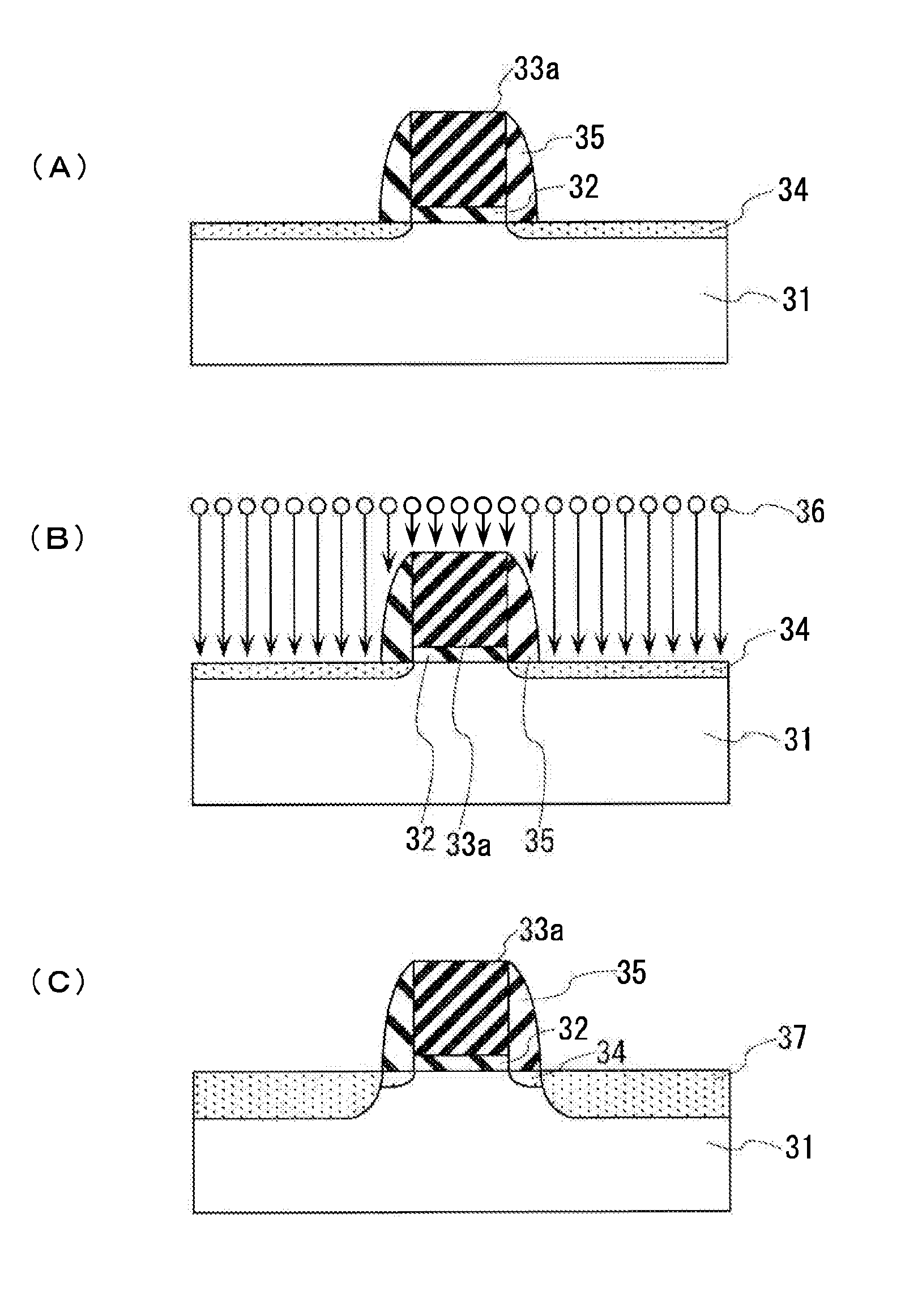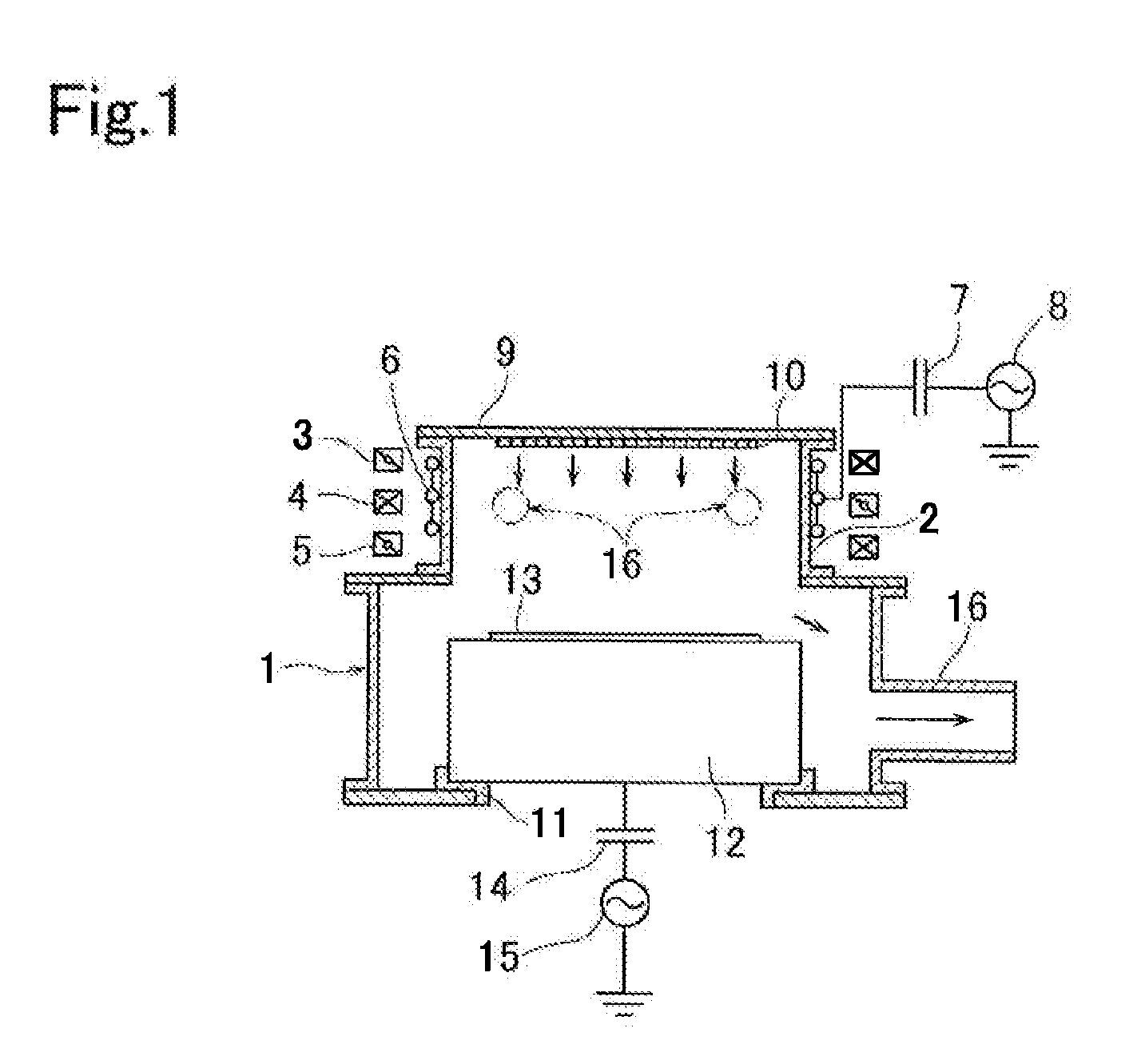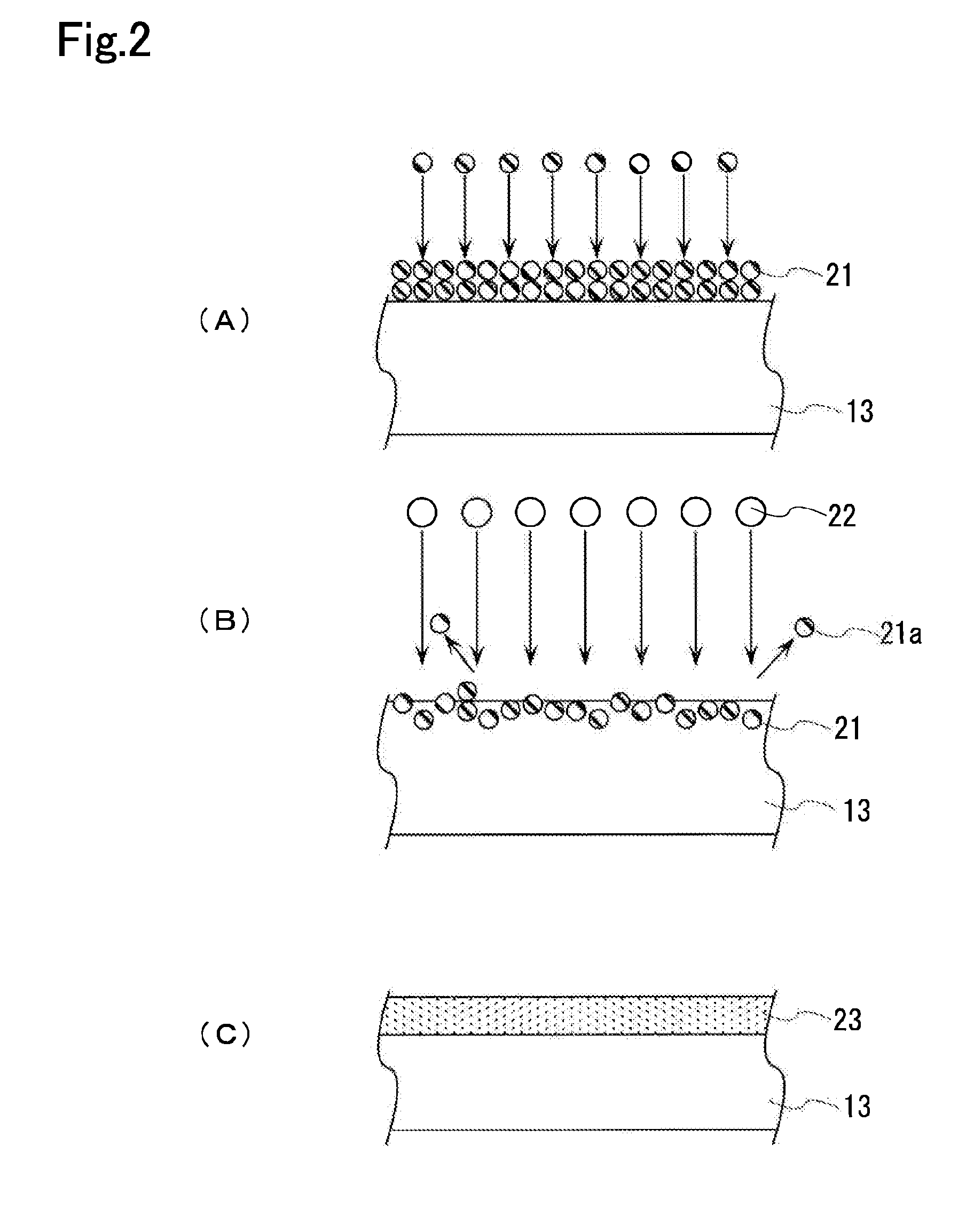Plasma doping method and manufacturing method of semiconductor device
a manufacturing method and semiconductor technology, applied in the testing/measurement of individual semiconductor devices, semiconductor/solid-state devices, instruments, etc., can solve the problems of difficult formation of shallow extension regions, inability to achieve uniform in-plane, and inability to achieve uniform deposition of radicals on the surface of the substra
- Summary
- Abstract
- Description
- Claims
- Application Information
AI Technical Summary
Benefits of technology
Problems solved by technology
Method used
Image
Examples
first embodiment
[0041]In the following, a plasma doping method of the present invention will be described with reference to the accompanying drawings. In addition, the elements common to in each drawing are denoted by the same marks, and duplicating descriptions are omitted.
[0042]A processing apparatus used in the present embodiment is, for example, an ICP (inductively coupled plasma) type plasma doping apparatus as shown in FIG. 1, and is equipped with a vacuum chamber 1 capable of forming a vacuum atmosphere.
[0043]The upper part of the vacuum chamber 1 is configured in cylinder portion 2, made of a dielectric, such as quartz, and the cylinder portion 2 functions as a plasma generation unit. Three ring-shaped magnetic field coils 3, 4, and 5, which can form a magnetic neutral line (NLD) in the cylinder portion 2, are arranged on the outside of the cylinder portion 2. A looped antenna coil 6 is arranged between the cylinder portion 2 and the magnetic field coils 3-5. The antenna coil 6 is connected...
second embodiment
[0101]In the second embodiment described above, after depositing the boron radicals 21 on the surface of the silicon substrate 31, the argon ions 22 are radiated to the deposited boron radicals 21, at the time of forming the extension region 34 after the formation of the gate electrode 33a. The radiated argon ions 22 collide with the boron radicals 21, and thereby the boron radicals 21 are pushed into the silicon substrate 31.
[0102]According to the present embodiment, the deposition step of the boron radicals 21 on the surface of the silicon substrate 31, and the radiation step of the argon ions 22 to the surface of the silicon substrate 31 are separated from each other, the in-plane distribution of the boron radicals 21 and the in-plane distribution of the argon ions 22 on the surface of the silicon substrate 31 can independently be controlled. Consequently, the in-plane distribution of the boron radicals 21 on the surface of the silicon substrate 31 is improved, and rare gas ions ...
third embodiment
[0121]In the third embodiment described above, while depositing the boron radicals 21 on the surface of the silicon substrate 13, the argon ions 22 drawn into the surface of the silicon substrate 13 are made to collide with the deposited boron radicals 21. Hereby, the boron radicals 21 deposited on the surface of the silicon substrate 13 are pushed into the silicon substrate 13, and a part of the boron radicals 21 is scattered from the surface of the silicon substrate 13.
[0122]According to the present embodiment, the depositing speed of the boron radicals 21 on the surface of the silicon substrate 13 and the etching speed of the boron radicals 21 by the argon ions 22 are made to be equal to each other, and thereby the surface of the silicon substrate 13 is covered by the boron radicals 21 at the time of introducing the boron radicals 21 into the silicon substrate 13. Consequently, the surface of the silicon substrate 13 can be prevented from being etched by the argon ions 22. Conseq...
PUM
| Property | Measurement | Unit |
|---|---|---|
| depth | aaaaa | aaaaa |
| peak-to- | aaaaa | aaaaa |
| thickness | aaaaa | aaaaa |
Abstract
Description
Claims
Application Information
 Login to View More
Login to View More - R&D Engineer
- R&D Manager
- IP Professional
- Industry Leading Data Capabilities
- Powerful AI technology
- Patent DNA Extraction
Browse by: Latest US Patents, China's latest patents, Technical Efficacy Thesaurus, Application Domain, Technology Topic, Popular Technical Reports.
© 2024 PatSnap. All rights reserved.Legal|Privacy policy|Modern Slavery Act Transparency Statement|Sitemap|About US| Contact US: help@patsnap.com










